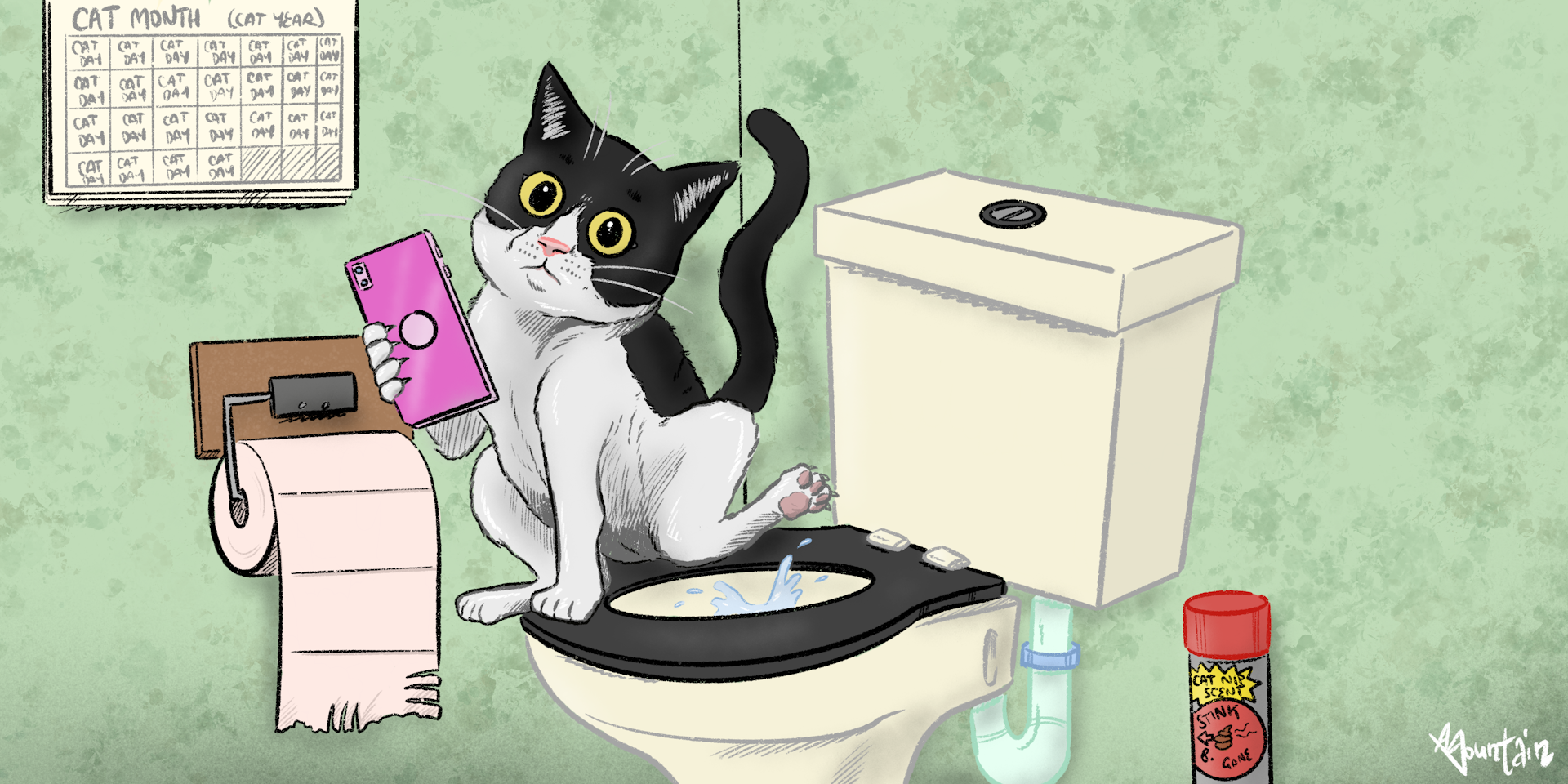We have stumbled upon this article pertaining to Don’t flush cat feces down the toilet below on the web and concluded it made sense to share it with you in this article.

Intro
As feline proprietors, it's important to be mindful of how we take care of our feline good friends' waste. While it might seem hassle-free to purge feline poop down the bathroom, this method can have harmful repercussions for both the environment and human health.
Alternatives to Flushing
Luckily, there are more secure and more responsible means to dispose of cat poop. Take into consideration the following choices:
1. Scoop and Dispose in Trash
One of the most common method of dealing with pet cat poop is to scoop it into an eco-friendly bag and throw it in the trash. Make sure to use a committed clutter inside story and throw away the waste promptly.
2. Use Biodegradable Litter
Go with eco-friendly feline clutter made from products such as corn or wheat. These litters are eco-friendly and can be safely disposed of in the garbage.
3. Hide in the Yard
If you have a lawn, consider burying pet cat waste in a designated area far from vegetable gardens and water sources. Make certain to dig deep adequate to avoid contamination of groundwater.
4. Set Up a Pet Waste Disposal System
Buy an animal waste disposal system particularly created for cat waste. These systems make use of enzymes to break down the waste, minimizing odor and environmental effect.
Health and wellness Risks
In addition to ecological worries, flushing cat waste can likewise position health risks to humans. Feline feces may consist of Toxoplasma gondii, a parasite that can create toxoplasmosis-- a potentially extreme disease, specifically for expecting women and people with damaged body immune systems.
Ecological Impact
Purging feline poop introduces harmful microorganisms and parasites right into the supply of water, posing a substantial danger to water ecosystems. These contaminants can negatively influence aquatic life and concession water top quality.
Final thought
Accountable animal ownership prolongs beyond supplying food and sanctuary-- it additionally entails correct waste management. By avoiding flushing pet cat poop down the toilet and selecting alternate disposal methods, we can decrease our environmental footprint and protect human health.
Why You Should NEVER Flush Cat Poop (and/or Litter) Down Your Toilet
The Problem with Litter
The main function of litter is to solidify and adhere to your cat’s waste. While this makes litter excellent for collecting cat poop and urine, it’s also the exact property that makes it a nightmare when flushed down the toilet.
Cat litter can and will clog pipes. There is non-clumping litter, but it’s still quite heavy and can build up in pipes. This is true even of supposed “flushable litter.”
The problems only compound when the litter is already clumped into cat waste. Toilet paper is among the more flushable things, and even too much of that will clog a toilet.
The Problem with Cat Poop
Sewers and septic systems are designed with human waste in mind. The microbes that help break down human waste don’t work on cat waste. Additionally, cat poop plays host to the parasite Toxoplasma gondii.
When flushed, this parasite can enter the environment in places it was never meant to, posing a risk to pregnant women, their unborn children, and other people with compromised immune systems. While it might not seem possible, flushing cat poop can indeed introduce this parasite to the public water supply.
These reasons are why, even if you’ve trained your cat to go on the toilet and flush, which is possible, it’s still not a good idea. Also, pregnant women and the immunocompromised shouldn’t change litter, either.
How to Handle Litter
The best way to handle litter is to simply put it in a plastic bag and place it in the trash. Avoiding environmental risks and possible plumbing damage is worth the extra effort.
You can also invest in devices that seal away your cat’s waste in a separate compartment, so you don’t have to change the litter nearly as often. They’re also safer for pet owners because they limit the possibility of Toxoplasma gondii exposure.
Disposing of litter the old-fashioned way will ensure you won’t have to worry about any issues that flushing the waste can potentially cause.
Take Care of Clogged Pipes with Stephens Plumbing, Heating & Air Conditioning
The reasons you should never flush cat poop down your toilet are numerous, but sometimes the inevitable happens despite your best efforts.
Stephens Plumbing, Heating & Air Conditioning is ready to help if you’re experiencing litter-blocked plumbing. Whether you need us in an emergency or want to schedule regular maintenance, we’re here for you.
https://www.stephensplumbing.net/bathroom-plumbing/never-flush-cat-poop-down-your-toilet/

We were guided to that article on How to Dispose of Cat Poop and Litter Without Plastic Bags from someone on a different blog. If you enjoyed reading our blog post if you please be sure to pass it around. Thanks a bunch for your time. Please check our blog back soon.
Schedule And Pricing
Comments on “Prevent Plumbing Problems: Never Flush Cat Poop Down Your Toilet - Expert Advice”